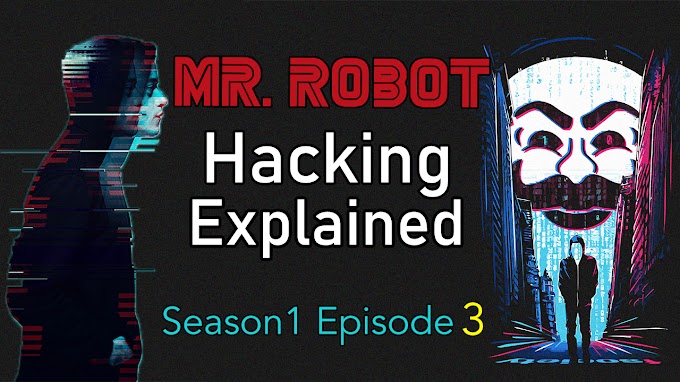HOW NOT TO BE CAUGHT BEING A HACKER
Before knowing how to be anonymous on web, Let's discuss various reasons to get it's importance. It is extremely important to stay anonymous being a hacker.
Let's talk about a simple example
1. We will start by assuming the attacker has choosen a target and succeded in achiving their goals. For an attacker to succeed in attacking a target, there must be some trail that leads back to him/her. The trick, as we will discuss later, is hiding that trail so that it can not be effectively followed. Again in this example we are going to assume the attacker is completely ignorant of how to cover tracks.
2. The victim reports the intrusion to authorities along with the data they have found in their own internal investigations. Often, this will only be one or more IP addresses. The authorities like FBI may do their own computer investigations to validate what the victim has given him.
3. The authorities open the records from ISP to determine who owns using the IP addresses that were the source of the attack. The ISP should be able to provide a name and physical address to the authorities.
4. The authorities obtain a warrant shown up and resize all the computers from the given address. Assuming that it was the dumbest computer criminal ever.
5. And finally the browsing history of our dumb hacker revels the fact the he has performed an attack to victim and then he is taken into charge.
Being a hacker you must be aware of each and every minute thing that happens on internet.
You might perform a phishing attack to your peers by watching a simple youtube video, but when you perform it you are leaving back the traces that is more than enough to be caught. So maintaining anonimity is always preferred being a hacker.
There are several techniques used by hackers to maintain anonimity on web. Let's list out some of them
1. ADDING LAYERS OF VIRTUAL MACHINES
Hackers usually operate on Linux machines and are careful to add extra layers of infrastructure between them and their operation.Before beginning an attack, hacker will likely connect through a series of virtual machines that are hosted in different regions of the world, acting as sort of a private cloud network. These access points are sometimes referred to as ghost machines and are replaced on a regular basis so that a hacker can cover their tracks.
2. MAC and IP SPOOFING
Every single device that wants to connect to the public internet must get an internet protocol (IP) address assigned to it by an internet service provider (ISP). This IP address will identifies the computer, so that it can easily send and receive requested data from websites through a browser.
A Media Access Control address is similar to an IP address except it is assigned during manufacturing and is specific to a network adapter. A computer with an ethernet port and a wi-fi access card will have two separate MAC addresses linked to it.
The IP addresses and MAC addresses are the most common ways that people are tracked online. To get around this, hackers use a variety of tools to spoof addresses to disguise location and which devices they are using. Certain versions of the Linux operating system make it easy for a user to set a custom IP or MAC address.
3. COMMUNICATING WITH IRC
Instead, you’ll find that most hackers rely on internet relay chat (IRC) implementations for all forms of communication. IRC apps are typically run on individual servers that do not interface with the public cloud. As a result, content on IRC channels is considered very secure and hard to trace.
4. USING TOR BROWSER
A typical internet user connects to websites using a popular browser application like Google. Hackers, on the other hand, have a different browser of choice. They primarily use a tool called the Tor browser, which offers built-in privacy advantages inherent with the great unindexed abyss that is the Dark Web.
When a webpage loads through the Tor browser, the initial request is actually first routed through a number of relays spread across the globe. This layered concept is known as onion routing, and that’s how The Onion Router became known simply as Tor.
At each stop on the onion relay, traffic is encrypted and then passed to a new IP address. This makes it almost impossible for outside entities to trace a user’s session and follow their activity.
Share the content to your friends.
For more content and queries FOLLOW our blog.
Thank you.









0 Comments